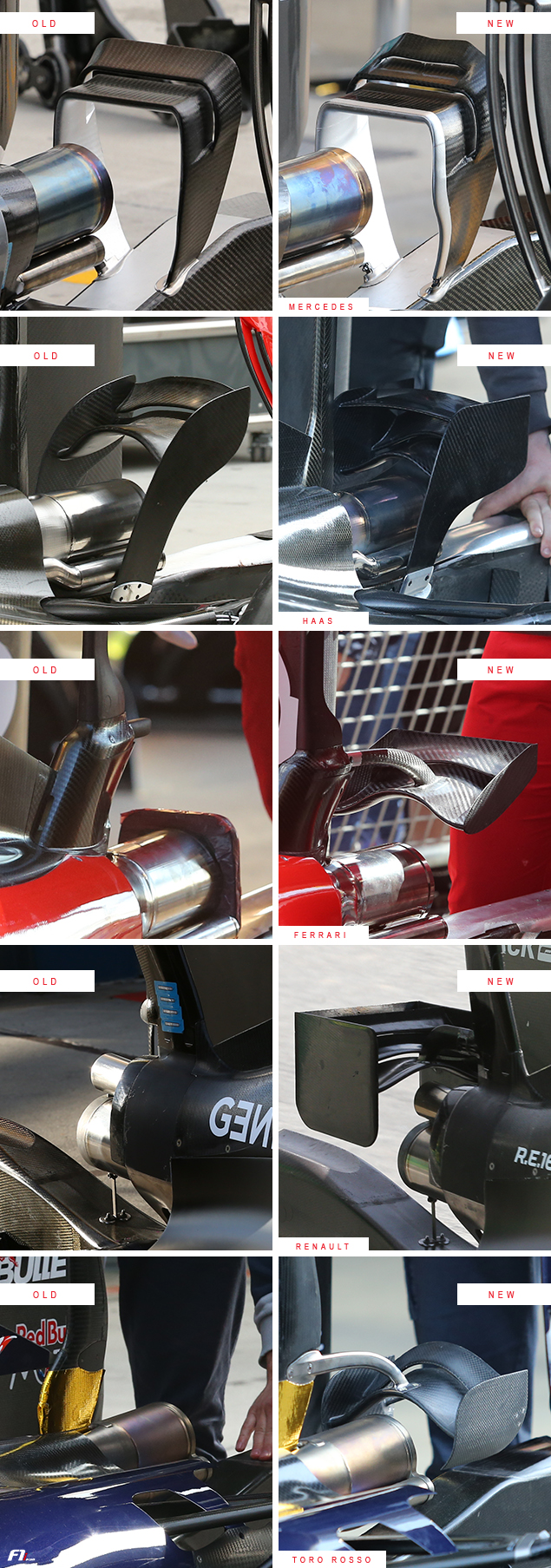F1i technical expert Nicolas Carpentiers takes a look at the flurry of upgrades introduced upon F1’s return to Europe in Barcelona.

MONKEY SEAT BUSINESS
The Spanish Grand Prix saw several F1 cars adorned with a monkey seat winglet (Mercedes, Ferrari, Toro Rosso, Renault to name a few).
At the back of an F1 car, two main aerodynamic elements interact with each other: the rear wing and the diffuser, which both guide the airflow upwards (under a phenomenon aerodynamicists call ‘upwash effect’). In between them can be found a monkey seat winglet, with current technical regulations allowing for a piece of bodywork located at least 100mm either side of the car centreline. That’s why the monkey seat is also referred to as the ‘Y100 winglet’. Since 2014, the width of the element has been increased from 15cm to 20cm.
In order to understand the purpose of the monkey seat, one must understand what happens above it, at the level of the rear wing. The latter has an optimum angle of attack, beyond which the wing starts losing lift. If the wing is too tilted, a stall phenomenon can happen, i.e. the air flowing underneath cannot stay attached to the wing. The air then slows down and goes straight ahead, which means it no longer creates a low-pressure area.
Located above the exhaust, the monkey seat assists the rear wing in preventing the stall phenomenon. How so? The Y100 winglet creates a depression zone above the exhaust, which sucks the gasses upwards (see orange curve on the image above) and guides them under the rear wing. These gasses (see blue arrows) will then help the air flowing under the wing stay attached to it (see white arrows). That way, the rear wing can work in a stable manner while being at a high angle of incidence, which is necessary to generate aerodynamic load. And one knows how much of a performance factor downforce is around the fast, sweeping curves of Circuit de Barcelona-Catalunya.
While Mercedes and Haas redesigned their monkey seats, Toro Rosso, Ferrari, and Renault actually added a Y100 winglet to their cars. The SF16-H and R.S.16’s monkey seats came in addittion to a high-downforce rear wing. One can also notice that Mercedes has used a high temperature coating on the monkey seat of the Silver Arrow (probably Zircotec).






